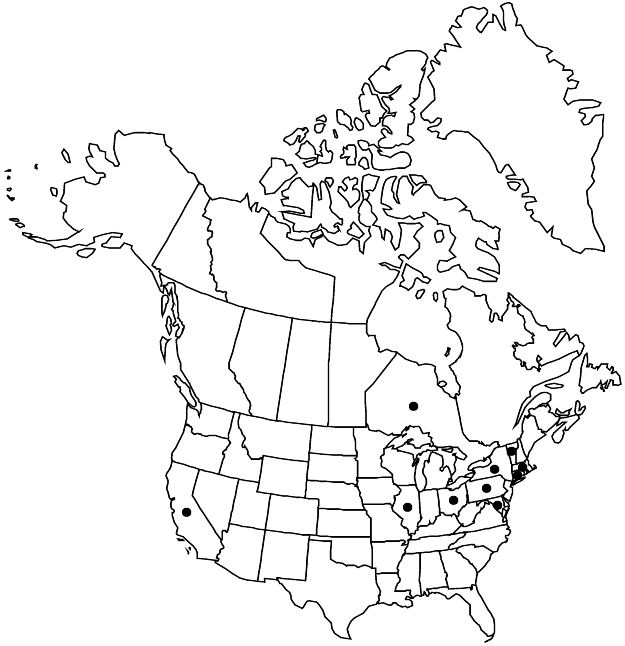Cydonia oblonga
Gard. Dict. ed. 8, Cydonia no. 1. 1768.
Branches purplish red, densely tomentose young, purplish brown, glabrous with age. Leaves: petiole 3–10 mm, tomentose young; blade 5–10 × 3–5 cm, base rounded or subcordate, apex acute or emarginate, lustrous or semilustrous. Pedicels 0–5 mm. Flowers: sepals 5–6 mm, apex acute; petals 15–20 mm. 2n = 34.
Phenology: Flowering Apr–May; fruiting Sep–Oct.
Habitat: Old fields, fencerows, wastelands
Elevation: 5–500 m
Distribution

Introduced; Ont., Calif., Conn., Ill., Md., Mass., N.Y., Ohio, Pa., Vt., Asia, also in South America, Europe, Africa
Discussion
Cydonia oblonga is cultivated in the United States, particularly California and New York, for its fruit and less often throughout temperate North America as an ornamental and a curiosity. It is often used as a dwarfing rootstock for pears. In the Mediterranean regions of Europe, South America, China, and elsewhere, it is cultivated for the golden yellow aromatic fruit that is rich in pectin, making fine jellies and preserves. The fruit is also used in pies, turning deep red when cooked.
Selected References
None.
